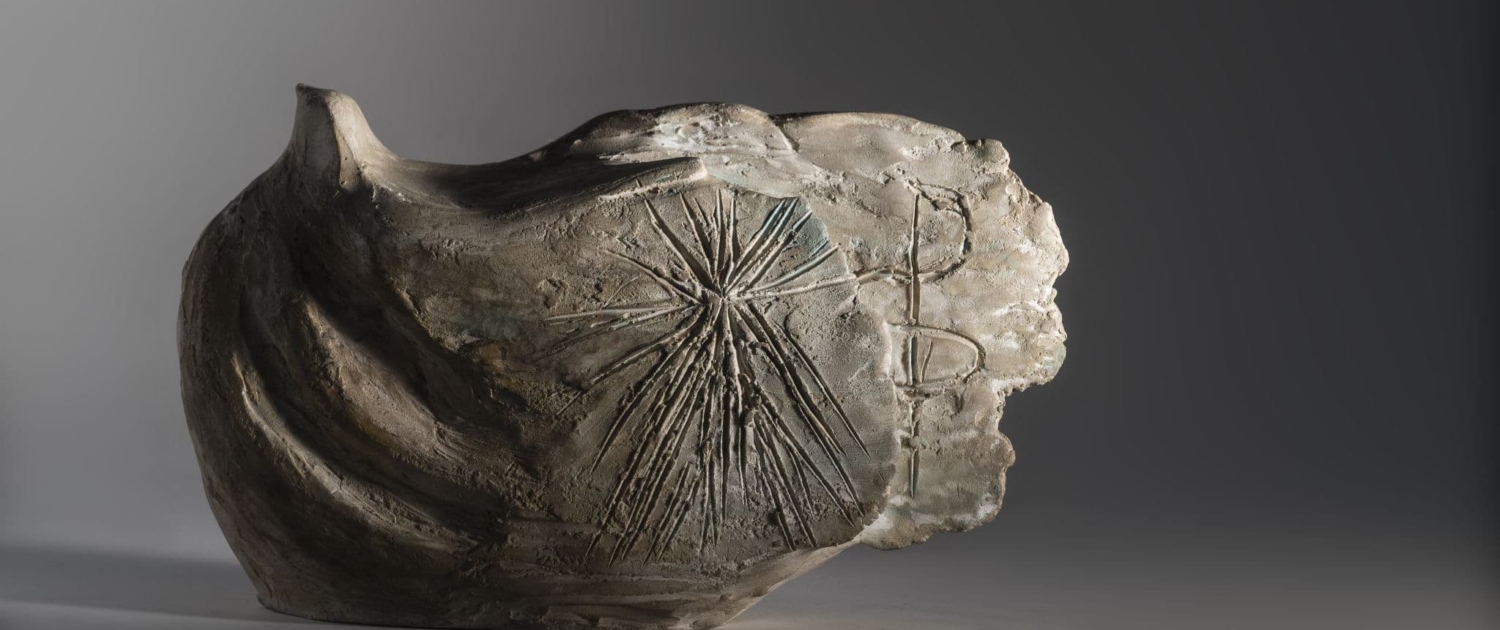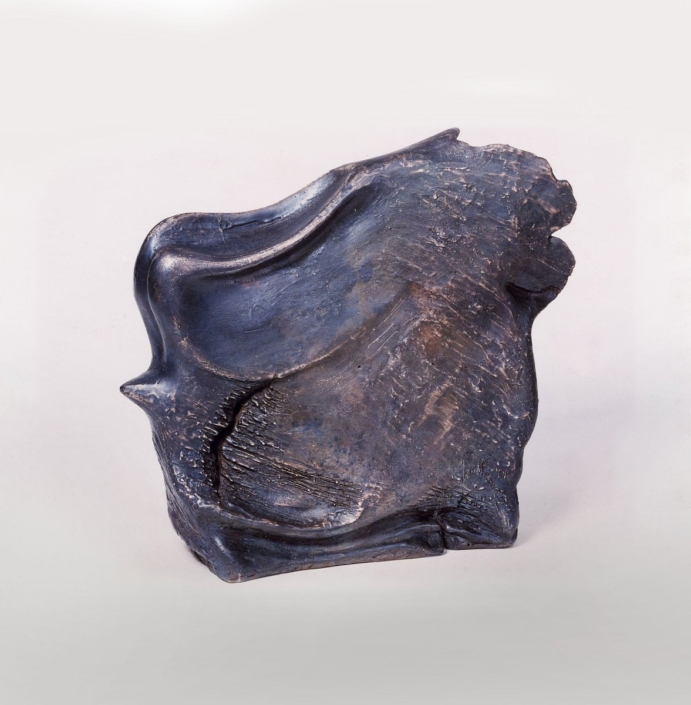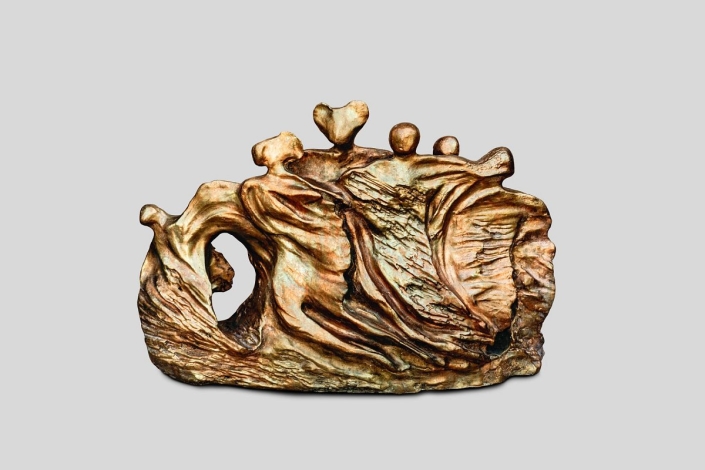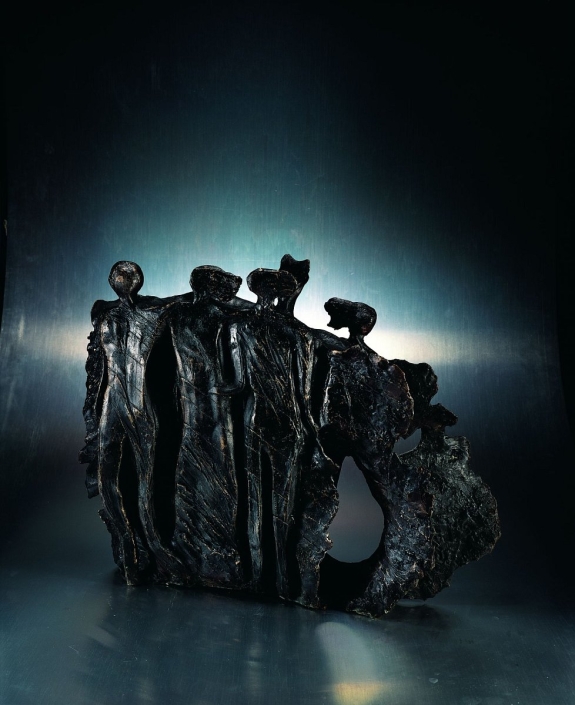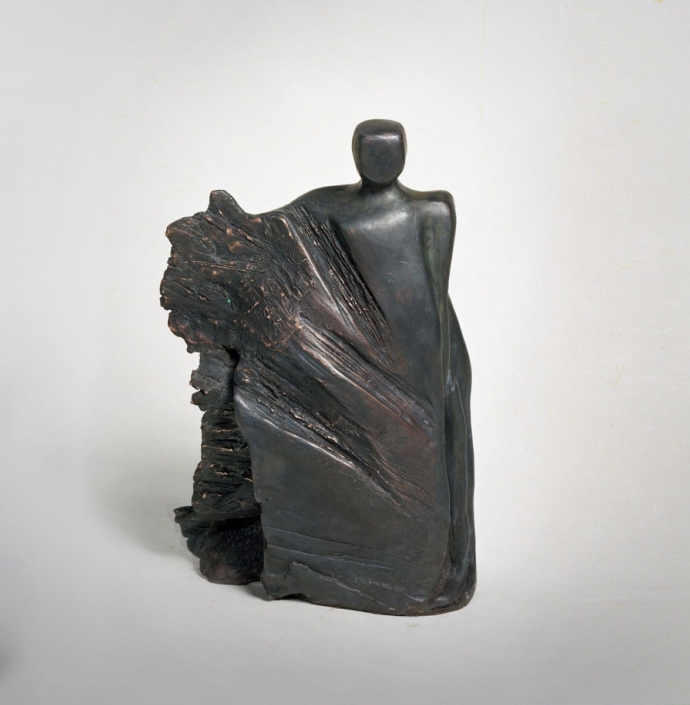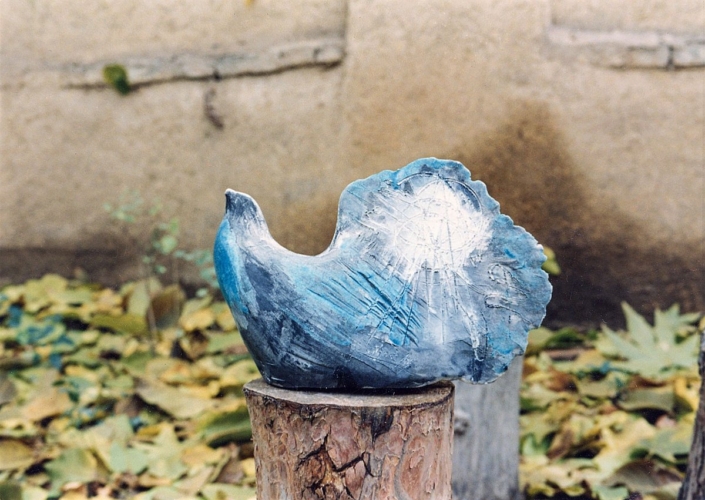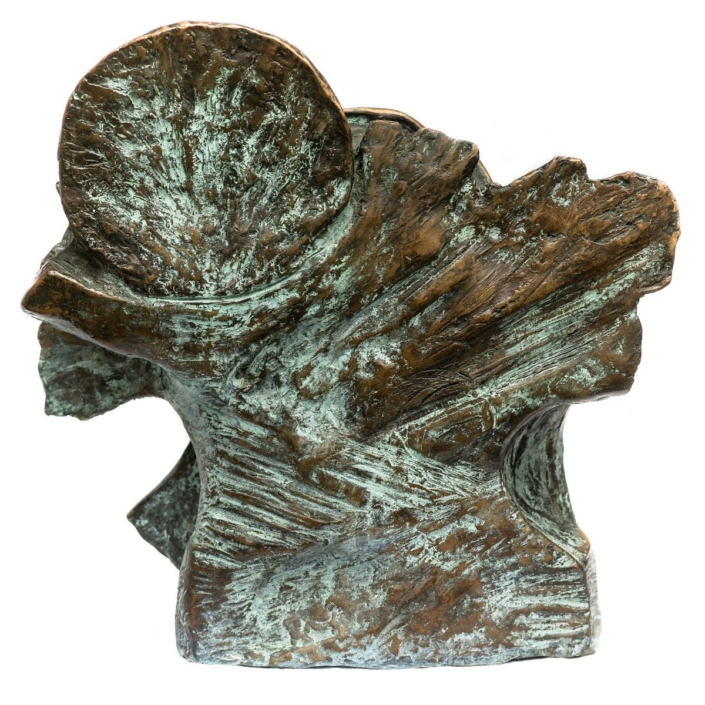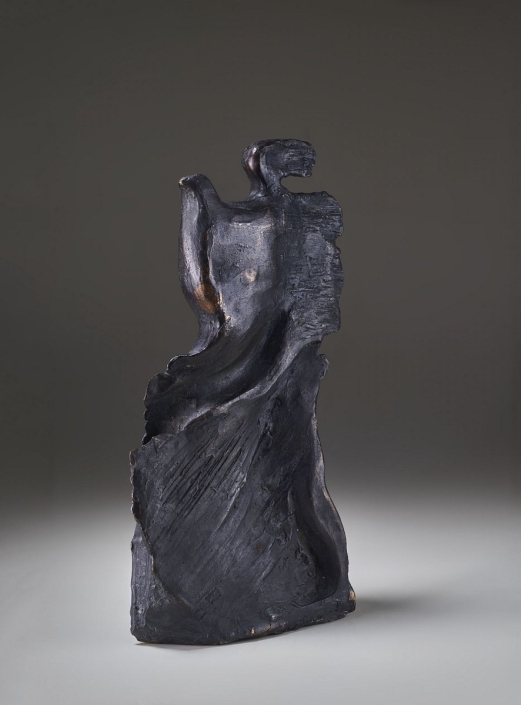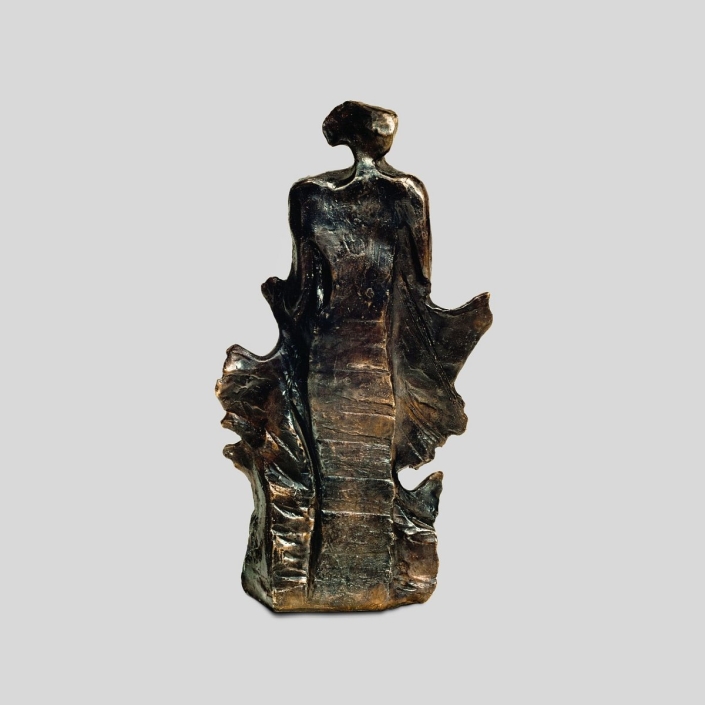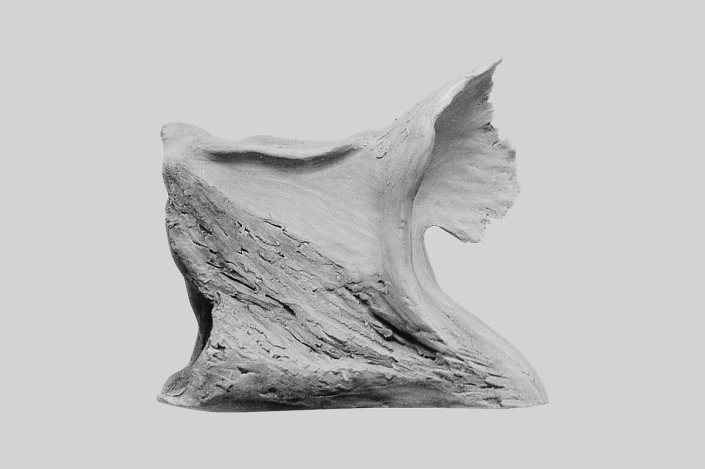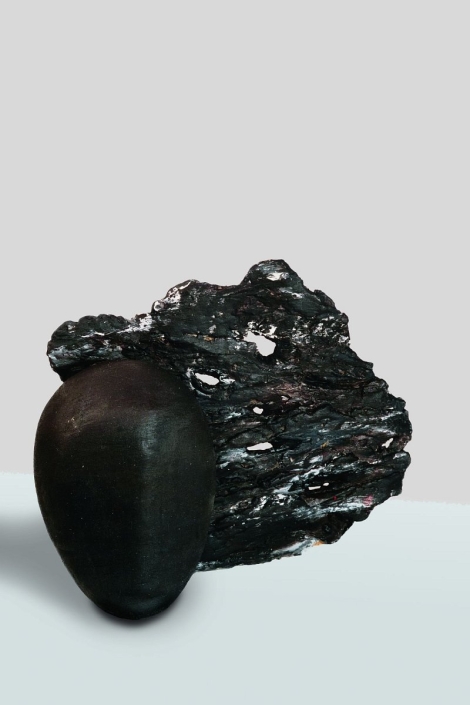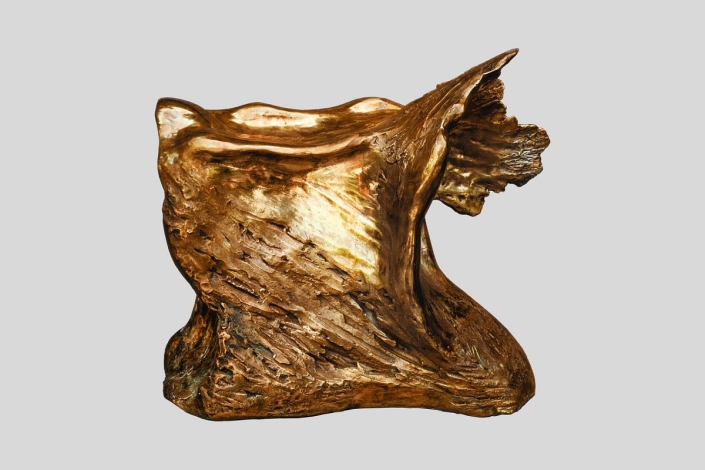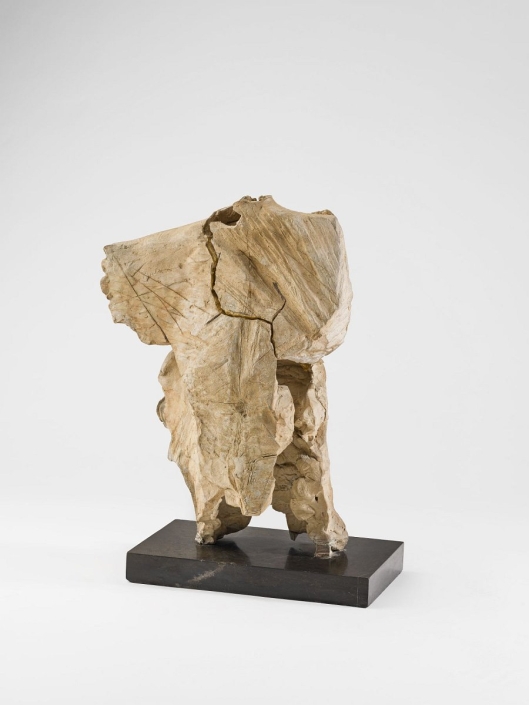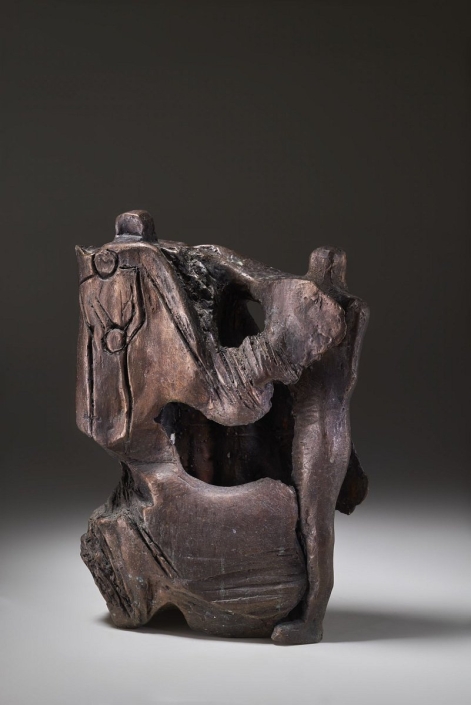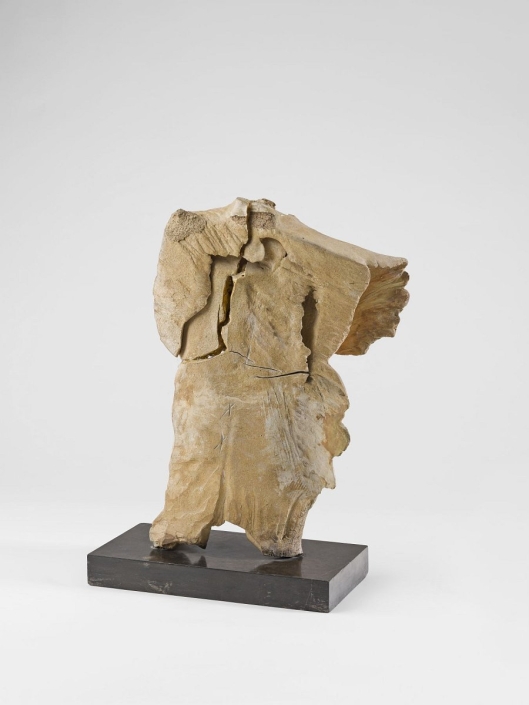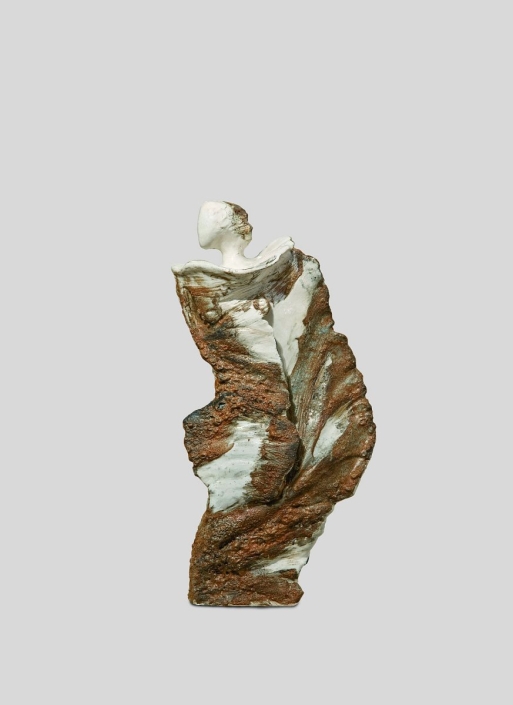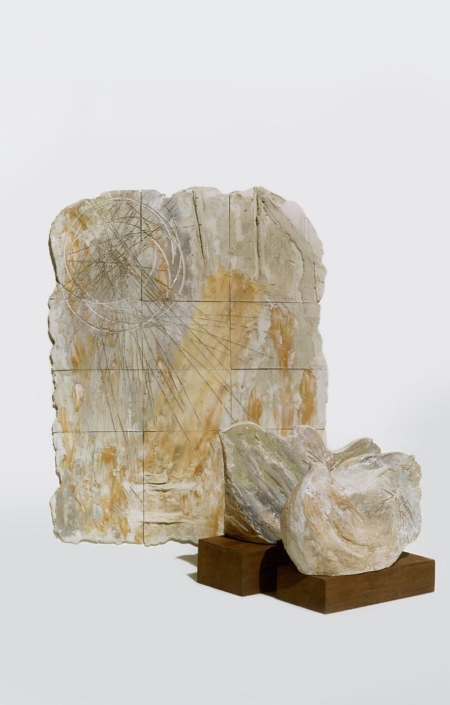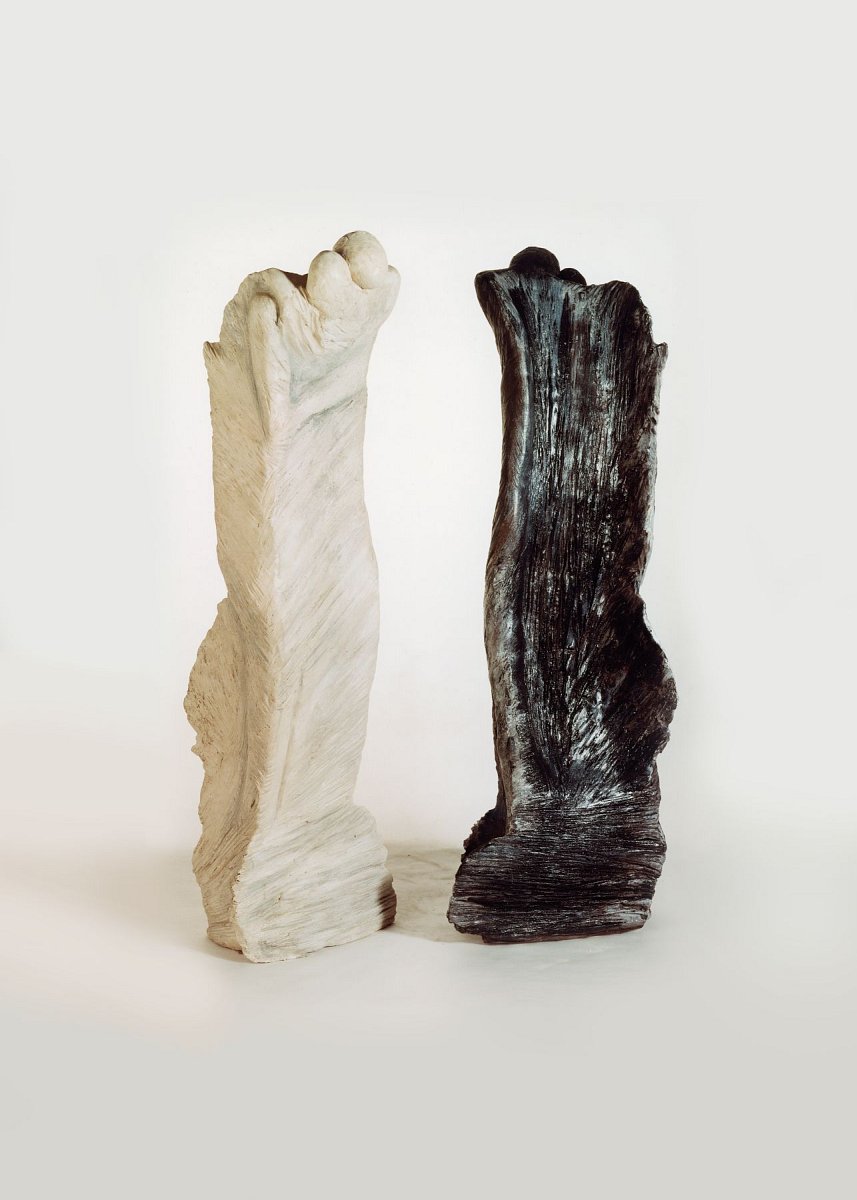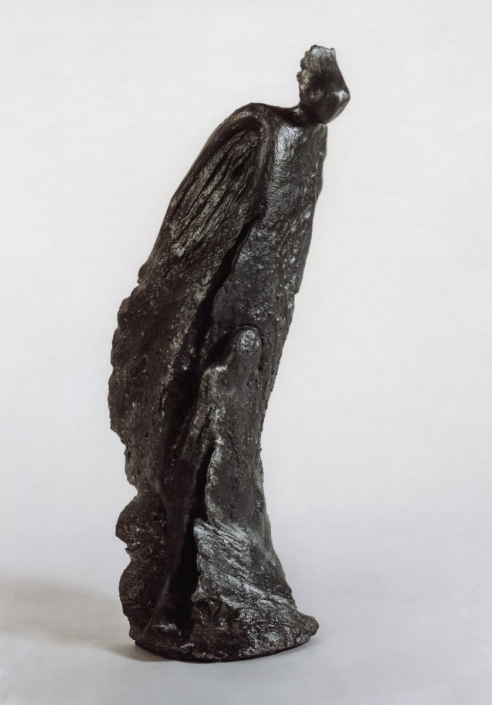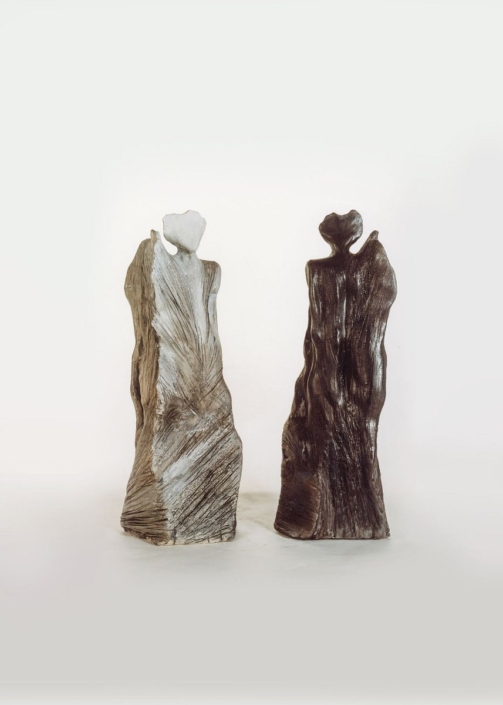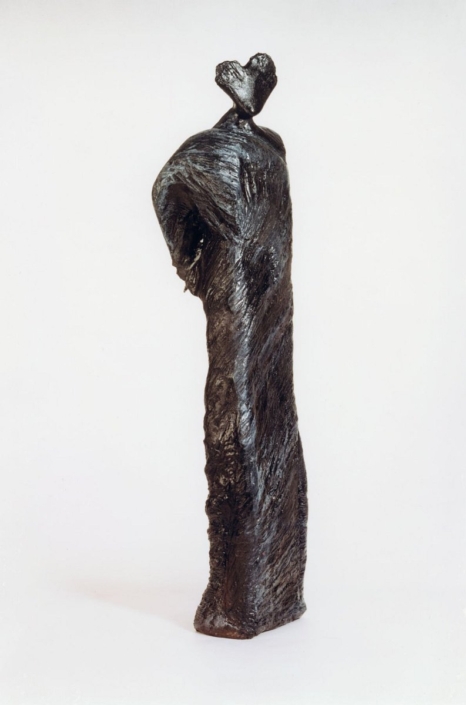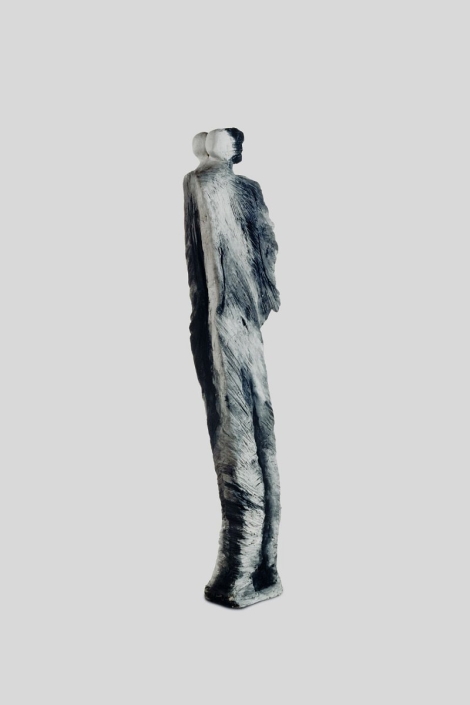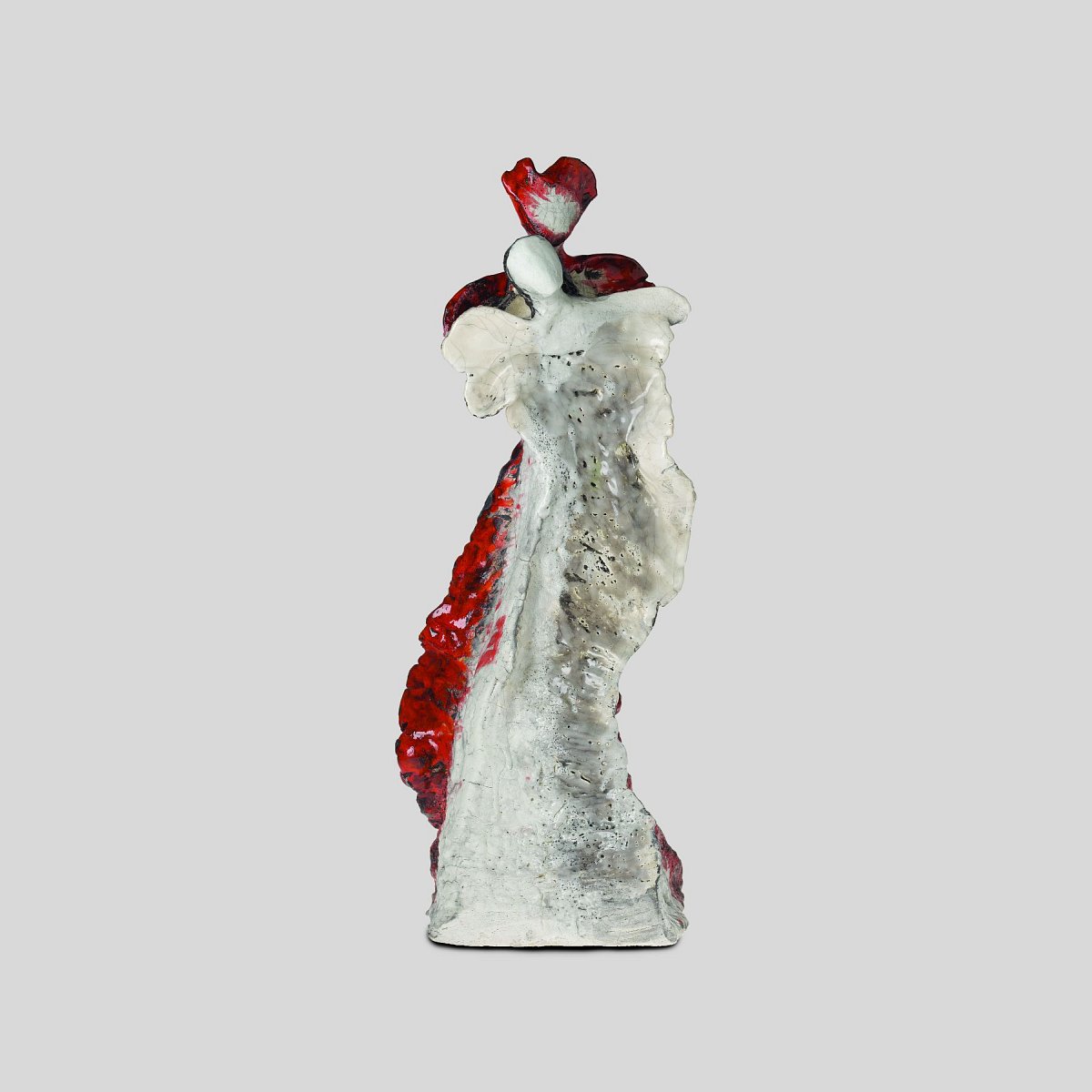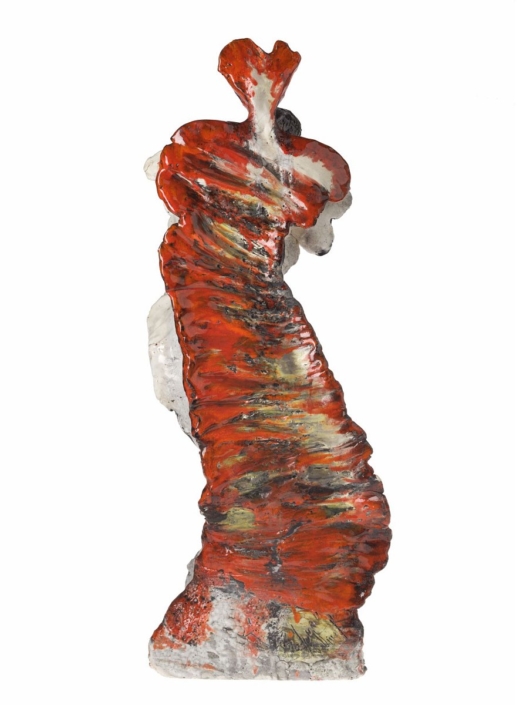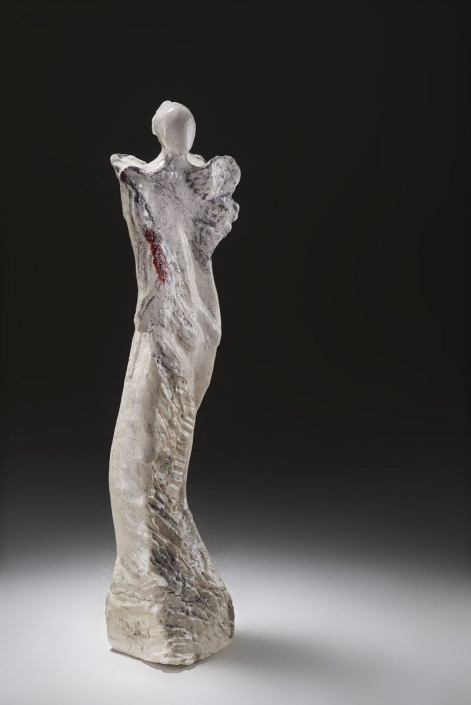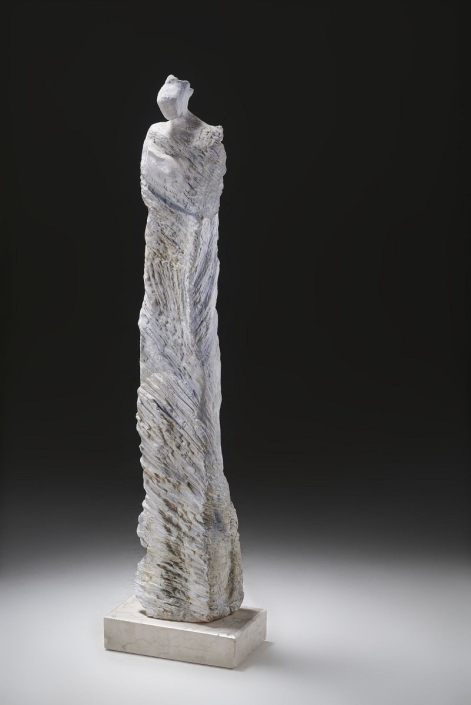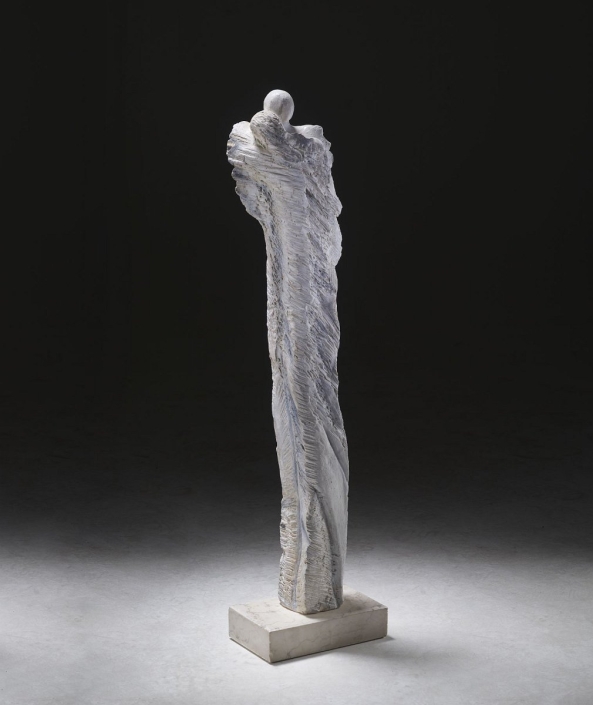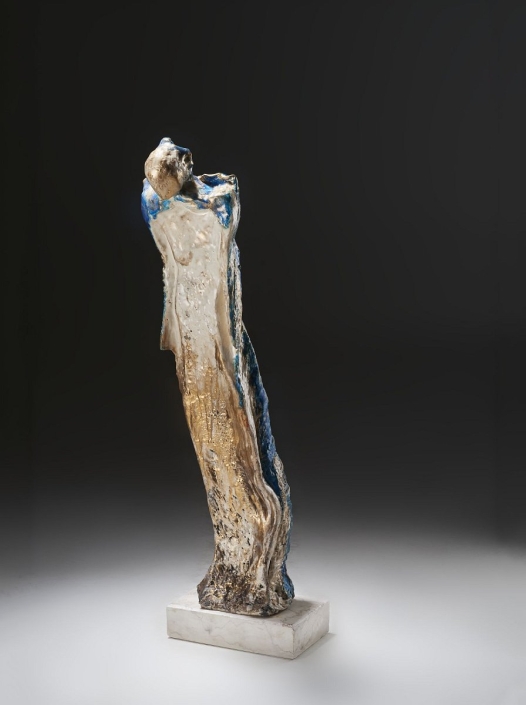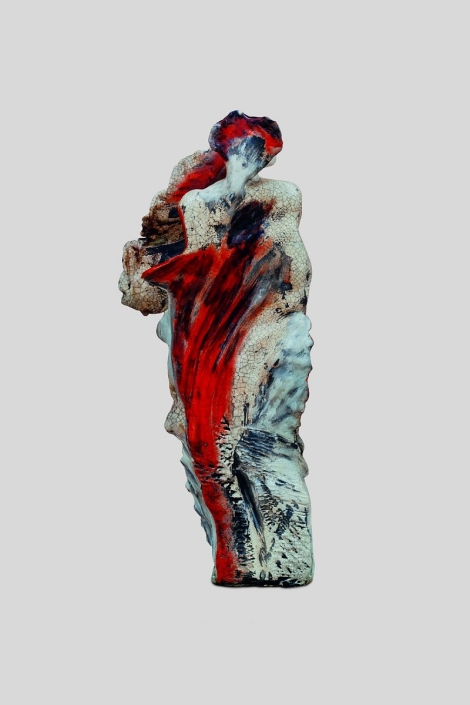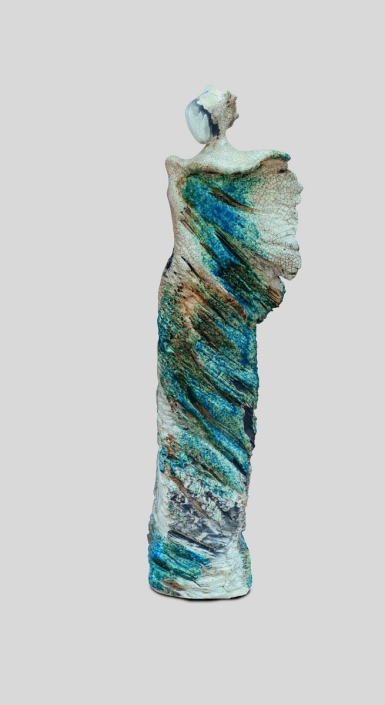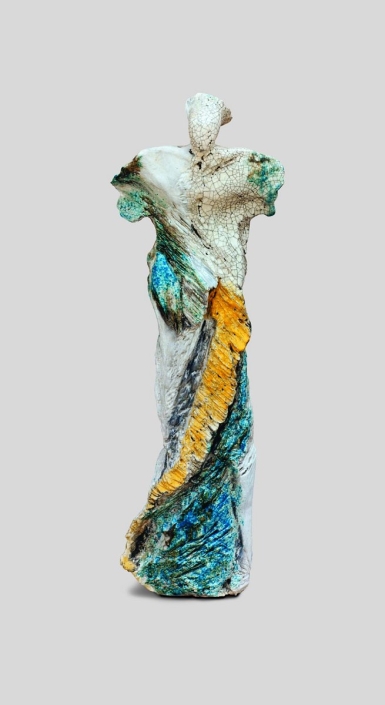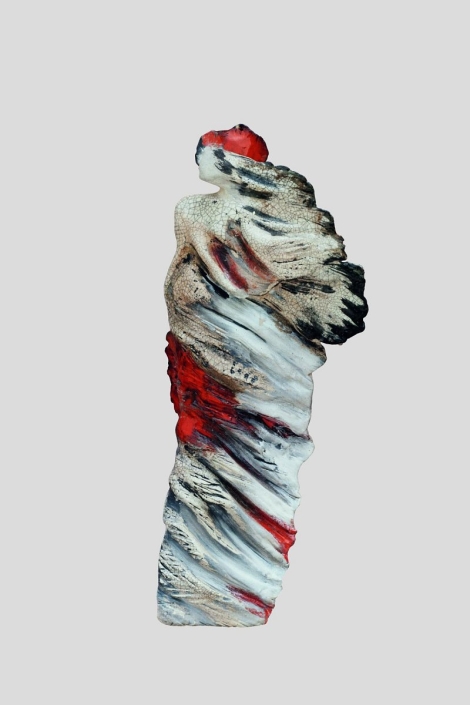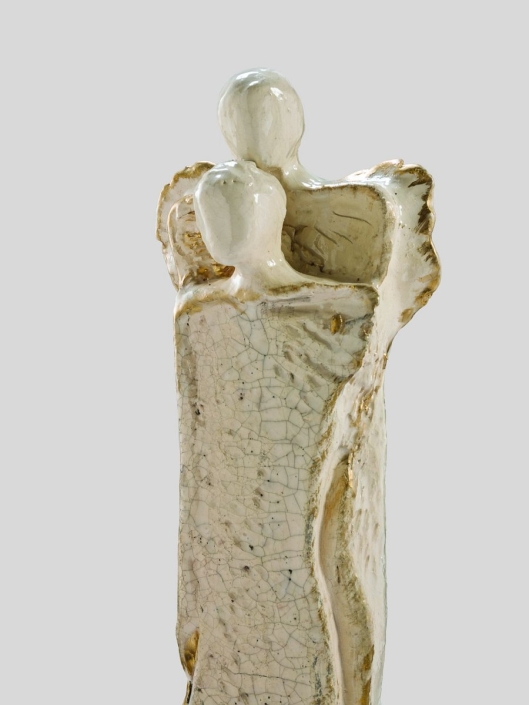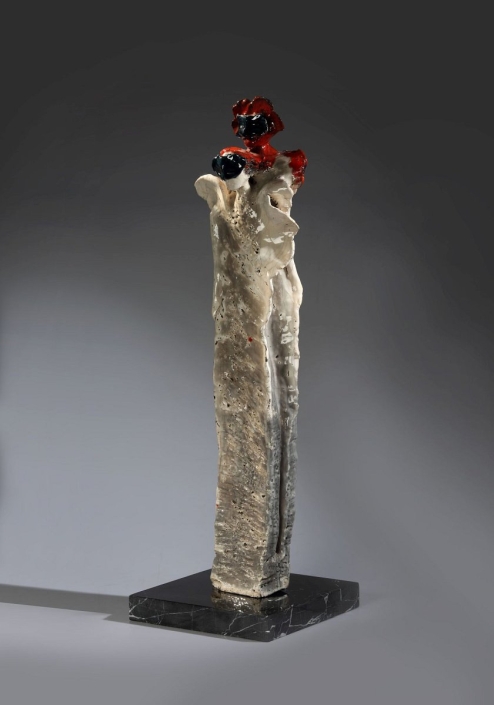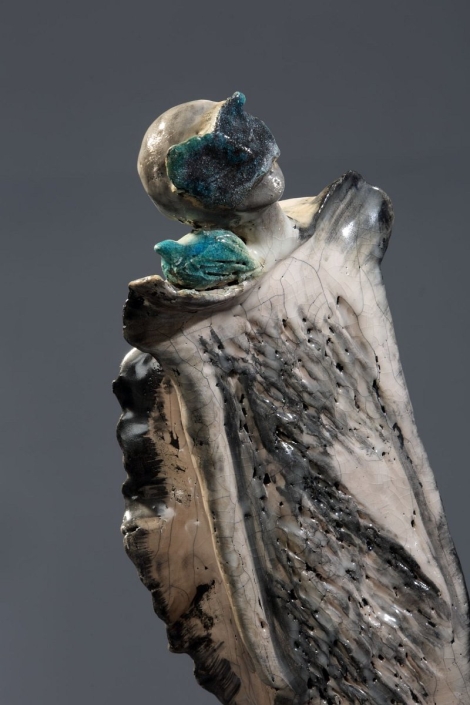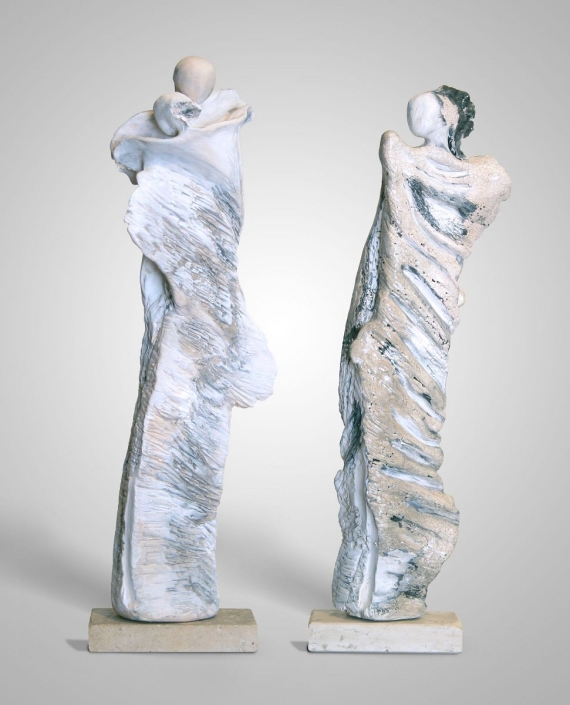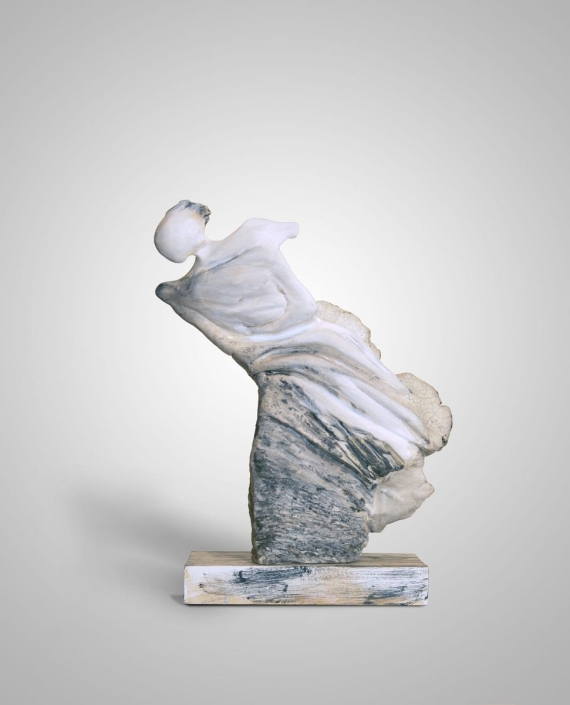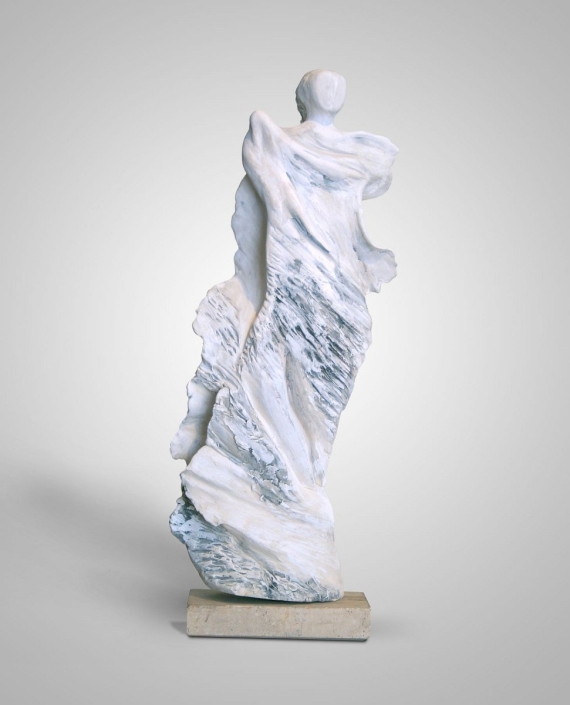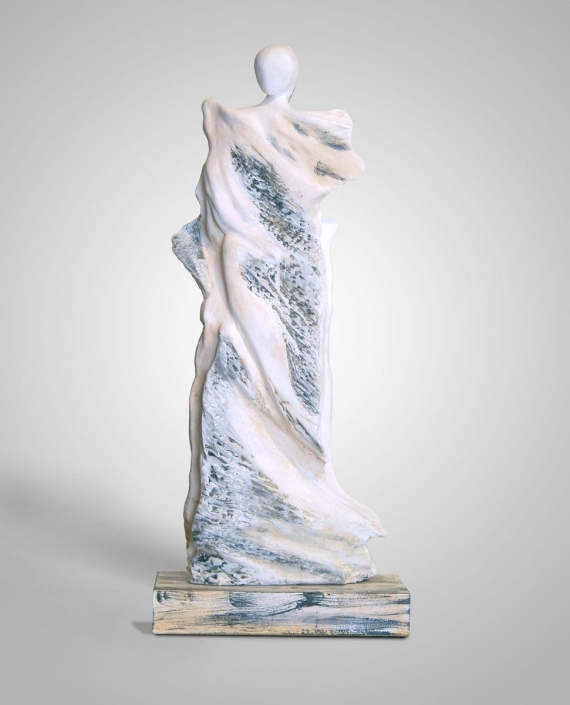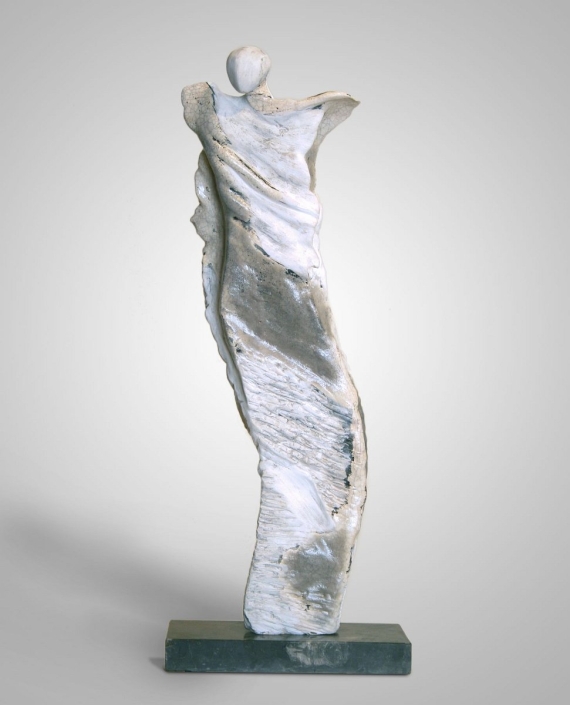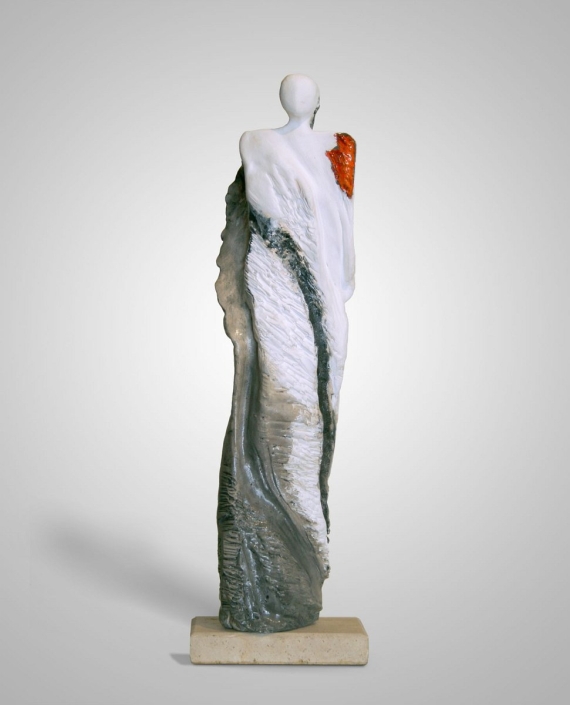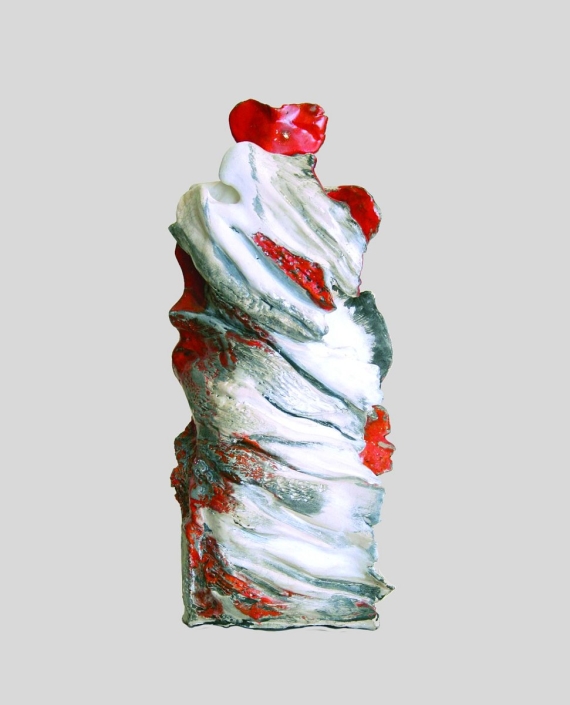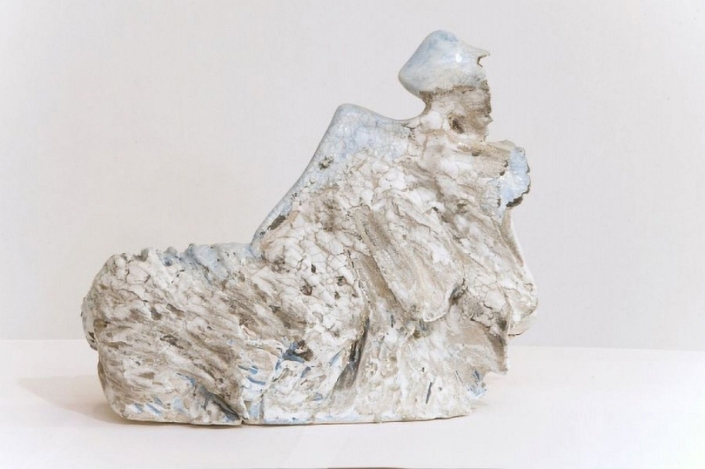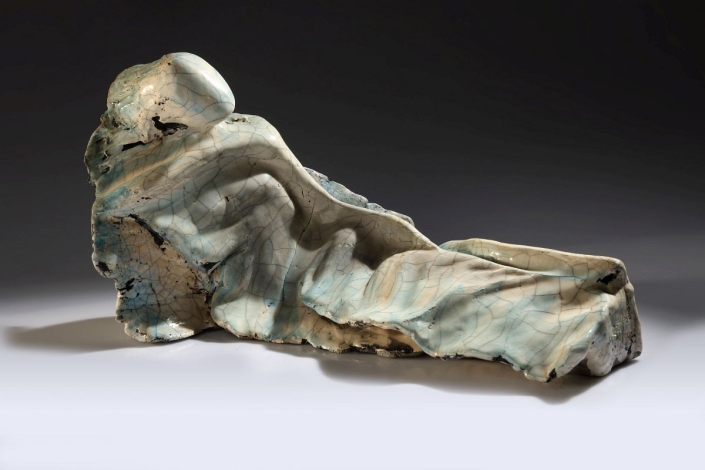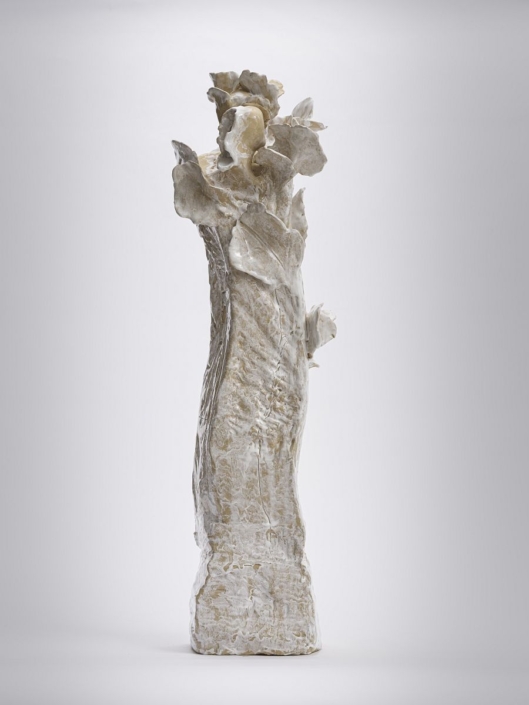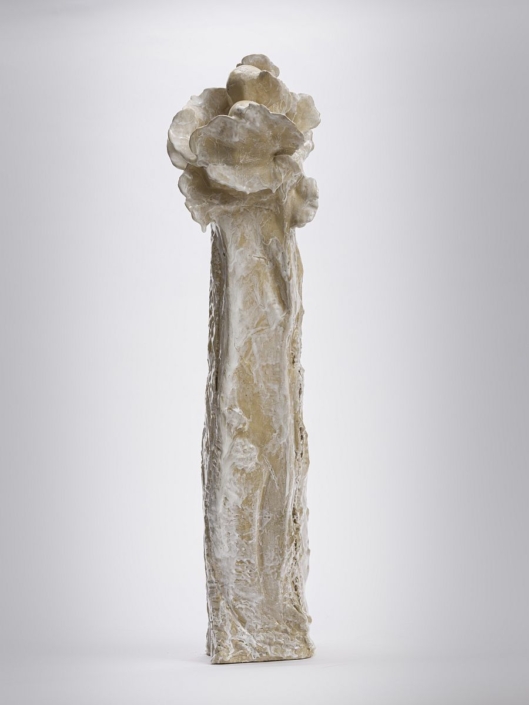Symphony of Flying
Bird-Woman | Bronze | 1994
Hands for Seeing
The ceramics of Maryam Salour are at once statues of artistic integrity and objects serving everyday functions. The juxtaposition of colors calls the viewer to a calm and pleasant, but adventurous and vibrant, journey. These are undulations of a creative spirit.
The mind submerges itself in the swell of explosive reds and yellows. The calm of blue is not stable and rapids are not far behind. This journey takes the viewer to the poetic world of Maryam Salour.
The forms hidden behind the balance of dark and light colors (yin & yang) outline a mysterious bird. This is a bird yearning for freedom, with an unquenchable desire to discover distant and imaginary lands. At times the bird flies deliriously and at other times cries inside a metal cage. Framed within a triangle, the bird reminds us of the artist’s feminine characteristics, singing her presence in the whisper of hopelessness in hope and hope in hopelessness.
The bird, woman, delicately emits a red shriek and then prepares to take off for her next destination, to the land of dreams, poetry, and creativity, with the blue of her caressing wings. The concave triangle transforms into a pendulum of maternal gestation and unconditional love.
Because of the feminine essence in the form of bird-woman and the use of earthen material (clay and color pigments), works of this young artist remind us of the worship of sacred goddesses in ancient civilizations.
Anne-Françoise Potterat
Artist
Tehran, Spring 1993
Day and Night
“Amorously no. 2 White” | Earthenware, black manganese oxide, titanium oxide and zinc oxide | 64 x 16 x 10 cm |1998
Day and Night
Maryam Salour started her career as an artist with ceramic pottery. What she made were recognizable in their familiar shapes and forms, but they had additions that were at times dainty (harmonious compositions of colorful glazes) and at times cheeky (serrated edges, crosshatch patterns, and splashes of glazes over colorful glaze) that made the whole piece look much more than just a decorative wear.
It was clear back then that she was not content with limitations imposed by functionality and would move beyond the use-value of her creations – mostly plates, vases, and lamp stands – and this is what happened. She is now making sculptures: simple, majestic, and at times forlorn, not too tall or broad-shouldered. The viewer would need to bend over and get nearer to satisfy his/her curiosity.
These statues are usually without a visage. Their bodies are drawn out and balanced, which go well with their grated and furrowed texture. Some are bent to the side or over, but they do have a base that supports them. Their colors range from dark to light and their wax-like texture is a new technique in Iran. In several statues, in the place of a head, we see a shape akin to a heart; among these, a pair of statues is the most successful. The two sculptures, standing next to each other, are identical in shape; however, one is black and the other white.
Among other works, the series of dark sculptures with tall and stationary bodies are also pleasant. Their visages cannot be discerned, as if covered by a long imaginary cloth that effaced all the facial details, leaving only the general outline of the idea.
Maryam Salour’s Walls are another set of works that show her prolonged conversation and affinity with the contemporary art scene. Characterized by coarsened and slashed surfaces, these walls are rectangular shapes in her favorite black, white, and grey colors. Their huge dimensions bring out the hidden potentials of blank slates.
For the past sixteen years, Maryam Salour has pursued her calling with utmost resolve and without pretense. She has experimented in many areas and with many mediums. Looking at the specimens of her works up until today, we can hope that she will continue on her path with courage and determination.
Aidin Aghdashloo
Artist
2000
Amorously
The Devil & Angel | Ceramic, 70 x 23 x 14.5 cm | 2011
Devil and Angel
Maryam Salour named her sculpture ‘The Devil & Angel.’ The angel stands with the devil perilously close behind. The angel is glazed purely white and the devil, brightly red. They draw on the age-old concept of two opposing forces in life and nature – good and evil. But the sculpture embodies the artist’s disbelief that the world is so simply black and white. The two figures cannot deny their common origin, because they grow out of a single lump of clay. There is also a little red in the white of the angel and some white glaze runs into the devil’s red – coloured body.
Salour’s sculpture ‘Demon and Angel’ is a remarkable piece of contemporary Iranian art. It combines formal beauty and technical virtuosity. Through this ceramic work, the artist expresses affinity for her homeland, its culture and nature. Iran has a long history of ceramic production, a process that incorporates the fundamental elements of earth, fire, air and water. Salour is fascinated by the weathering of rock, forming clay over time which she can then manipulate and fire to produce a personal interpretation of nature.
Contemporary Iranian art is very much grounded in popular motifs that link tradition and modernity. For her sculpture, Salour drew on the dualistic concept of good and evil, and transformed it into a three-dimensional object. A characteristic feature of contemporary art in Iran is the creation of new meaning, new understanding, through the transformation of the non-existing into a structured form. Salour believes that the world is not simply black and white; The two figures are mutually dependent, each of them incorporates an element of the other. In this way, she questions our moral judgment with regard to right and wrong. Maryam Salour’s sculpture ‘Demon and Angel’ is beauty encased in clay and glaze and an artwork of universal significance.
Friederike Voigt
Curator
2003

